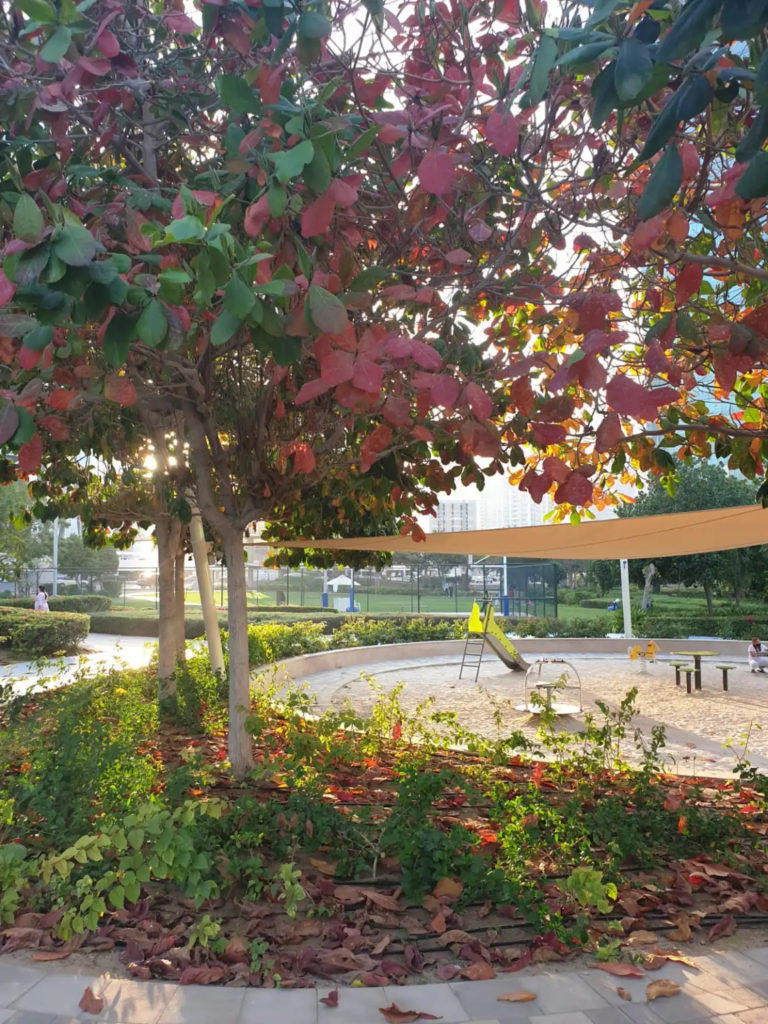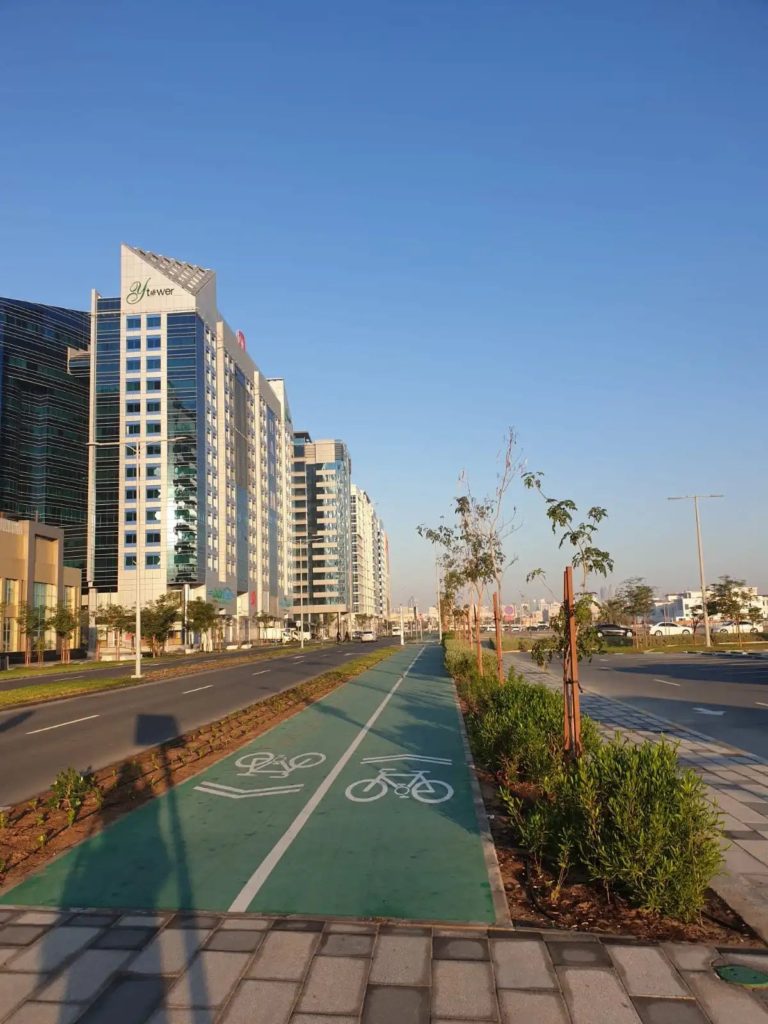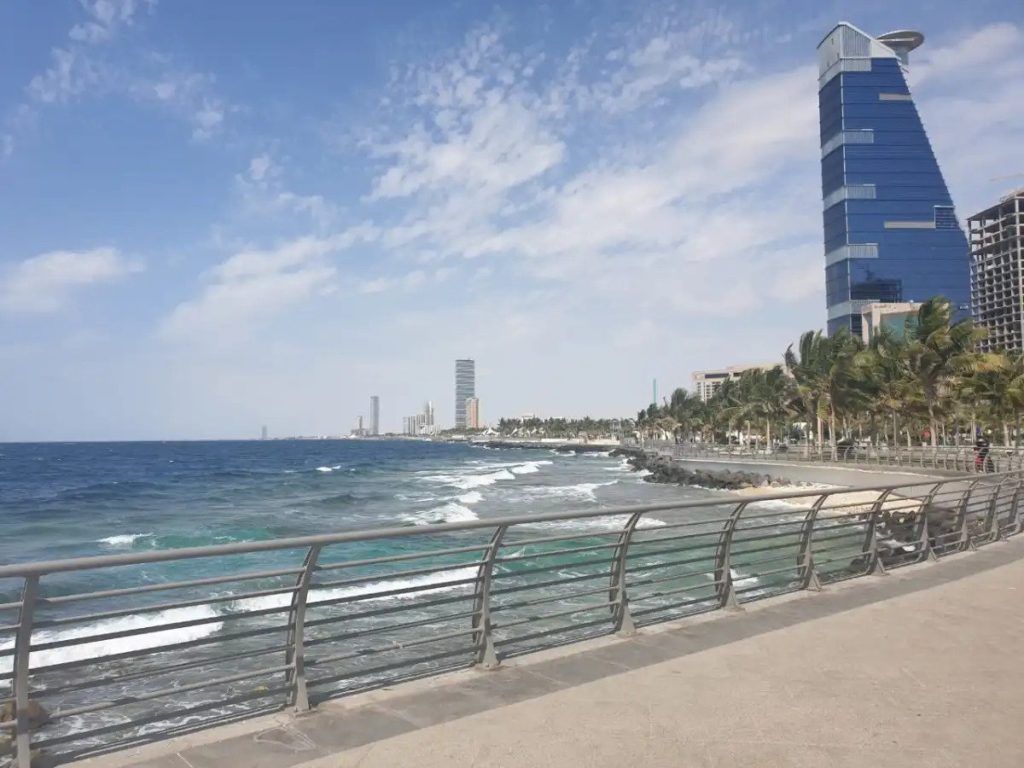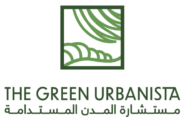Introduction
This piece describes my vision for urban health and wellbeing in Gulf Cooperation Council (GCC) cities. It advocates for two radical changes: Active Mobility and Access to Nature. Each of these brings multiple layers of physical and mental health benefits for the individual and the community. Moreover, they are both essential ingredients for a zero-carbon future. Both have also gained substantial importance and attention during the COVID-19 pandemic and can help create a more resilient reality for GCC cities.

What makes these interventions radical in the context of GCC cities is that they are, in many ways, a paradigm shift from how these cities have been planned over the past half century. While many cities around the world are experimenting with similar strategies, implementing these changes in the GCC will require a significant change in planning policy and design as well as in individual and community behaviors. Furthermore, the unique climate and cultural context of the GCC will require the support of local research and innovation centers, offering this nascent sector an exciting challenge and a considerable opportunity for development.
Active Mobility
Physical activity is important for both physical and mental wellbeing. Lack of physical activity is one of the main triggers for NCDs like type-2 diabetes, which is highly prevalent in GCC countries[1]. Research by the New Economic Foundation has found that physical activity is associated with “a greater sense of well-being and lower rates of depression and anxiety across all age groups”[2].
Generally planned around the car, GCC cities are slowly transitioning towards incorporating more active transport modes. With restrictions on vehicle movements and public transport, the COVID-19 pandemic has helped accelerate this transition. For example, in 2018, the Dubai Roads and Transport Authority announced plans to almost triple cycle lanes in the emirate by 2030 and in August 2020 Dubai’s Crown Prince issued directives to further improve the city’s bicycle infrastructure to international standards.
Reaping the full health, environmental and economic benefits of active transport will happen only if these modes are perceived as viable options for daily utilitarian trips (work, school, shopping… etc.). as well as leisure trips. This will require changes in land use planning practices, physical infrastructure design, and in cultural norms. While the magnitude of change is large, it can happen gradually over time.
Planning for mixed-use communities where community services and commercial uses are locally provided is critical as it will mean that trips to and from key destinations are within reach for most people through active transport modes. This aspiration of ‘complete communities’ has been embedded in some of the newer urban planning guidelines in the region such as the Community Facility Planning Standards in Abu Dhabi. There are also some examples of the aspiration being implemented in new developments over the past decade. One instance is Jumeirah Lake Towers in Dubai which boasts of being “…home to five hotels, two universities, 87 commercial and residential towers, parks and running tracks, over 600 retail outlets with more than 300 restaurants and cafés” and all within 180-hectare site[3].
In existing districts and neighborhoods, this may need to be undertaken through a deliberate and innovative infill strategy to provide facilities locally. For example, one approach may be incentivizing specific uses (temporary or permanent) for empty plots. Alternatively, permission may be given to change the use of existing residential assets. It would be exciting to see this change occur in some of the older, well-established residential neighborhoods in the region, and this could also help re-attract the local population to these prime locations.
In terms of physical infrastructure, safety (and perhaps more importantly the perception of safety) and comfort are paramount design parameters. Cycle lanes and pedestrian paths along waterfronts and within parks will not be sufficient. As a design community we will need to find safe, feasible solutions to integrating segregated walking and cycling lanes within our streets and across all neighborhoods. This will require flexible, outcome-focused planning and design standards for roads and communities, taking into consideration future needs and requirements.
As for comfort, shade is the most significant factor to consider when designing for outdoor comfort in Gulf cities. The difference between a well-used and an unused pedestrian pathway is often as simple as providing shade through trees or canopies. Depending on the specifics of place, temperature, humidity, and journey length, it may be appropriate to supplement shading with other microclimate design solutions such as misters and passive cooling techniques. A simple regulatory change requiring buildings to give the public access to air-conditioned ground floors can create make these spaces function as cooled transition spaces. This is a common practice in Singapore, for example.

The often-cited argument of Gulf cities being too hot for active mobility is largely inaccurate at best. While it may be too hot during midday in the summer months to walk for more than a few hundred meters without shade, this is not the design target. Instead, what can be targeted during the summer months are trips during early mornings and evenings. More importantly, smart design solutions can help make the ‘shoulder months’ (i.e., the months before and after peak summer months) more comfortable. This would allow walking and cycling to be viable transport modes for most of the year.
Aside from the direct benefits of active travel, replacing vehicle trips with active trips will mean reduced air and noise pollution from vehicles as well as reduced greenhouse gas emissions leading to a virtuous cycle of further positive health and environmental benefits. As recently articulated by researchers at The University of Oxford, “active travel can contribute to tackling the climate emergency earlier than electric vehicles while providing affordable, reliable, clean, healthy and congestion-busting transport”[4].
Furthermore, the COVID-19 pandemic has highlighted the importance of introducing flexibility and redundancy to our transport systems, through providing a multi-modal approach, to promote the resilience of cities. When private cars and public transport were not viable options due to lockdown or social distancing measures, there was a surge in active transport trips for obvious reasons. Having a functional and viable active transport network can help keeps cities moving in cases of other shocks or stresses which render other transport modes unusable (e.g., in case of electricity black-outs, fuel shortages or blockages to roads).
Accessible Nature
“The obsession with green in cities could be better managed if the binary of desert versus green could be broken.”[5] This statement by the Harvard professor Gareth Doherty captures many of the conceptual and practical challenges to better integrating nature in GCC cities.
Not only are GCC cities not generally associated with nature, but the natural features they do include are also often unsustainable and inaccessible. This is most obvious in the hundreds of water-thirsty palm trees planted within street medians and the hectares of lush green grass in private golf courses across the region.
The concept of integrating nature in cities was perhaps first popularised by the work of Timothy Beatley on Biophilic Cities. Since then, over the past decade, there has been a rapidly growing body of scientific evidence on the numerous health benefits for interacting with nature. A recent Yale studied concluded that 120 minutes was the time required in nature to reap the many benefits including lower blood pressure, enhanced immunity, increased self-esteem, and reduced anxiety[6]. A 2019 review paper on nature and mental health established that there is an evidence-based association between common types of nature experiences and increased psychological wellbeing as well as reduction of risk factors and burden of some types of mental illness such as depression[7]. Based on their findings, the authors proposed a conceptual model for capturing the mental health benefits of nature experiences. This model factors in the type of natural feature, the level of exposure (e.g., time spent), and the experience (e.g., level of interaction).
The science does not stop here. A conveniently over-looked body of literature describes the complexities of understanding and evaluating the impact of nature on wellbeing, particularly if we limit the discussion to urban green spaces and trees. Researchers at the University of Sheffield highlighted the difficulties in establishing a casual relationship between green spaces and positive health effects, and thus the potential for simplistic urban interventions to fail[8]. Similarly, a landmark interdisciplinary review published in 2019 found “no scientific consensus that urban trees reduce asthma by improving air quality”[9]. As someone trained in atmospheric science and public health, this finding was not surprising to me. I had never encountered a scientific argument for urban trees as an effective mitigation measure for asthma. However, when quoting this scientific finding to colleagues in the planning and design industry, all I could see were faces of amazement and disbelief as some of their deeply held convenient beliefs around urban trees were shattered.
When it comes to nature, my vision for GCC cities is not necessarily a “green” one. Integrating nature in the arid context of the GCC will bring shades of green, blue, yellow, brown, and much more in ways which allow close, multi-sensory interaction, reflection, and exploration. To transition to healthier cities, we need to move from a paradigm of visually pleasing green spaces to multi-functional nature spaces. In fact, I propose that the related indicators under UN Sustainable Development Goals 11 (SDG 11) be tweaked as follows: “By 2030, provide universal access to safe, inclusive and accessible, green nature and public spaces, in particular for women and children, older persons and persons with disabilities”.

Thinking beyond green spaces, we begin to see many natural assets endowed to cities in the GCC. First amongst these assets are water bodies, with almost all major cities overlooking either the Arabian Gulf, the Indian Ocean or the Red Sea. This is no coincidence – for centuries, cities and civilisations have developed adjacent to water bodies to facilitate easy access to water. Of course, with water bodies come coastal and marine habitats, including mangroves. Unfortunately, in many coastal of these coastal cities public access to the coast is substantially limited either by major highways or through private hotels and resorts.
In terms of parks, GCC cities have typically taken the approach of providing a few large public parks in addition to basic neighbourhood parks within planned government housing. This leaves many communities with limited access to these vital public nature spaces. My vision is for each city to have a network of public parks, of varying sizes and spread across the city, each being designed with functionality and sustainability in mind. I imagine spaces designed to provide multi-layered, multi-sensory interactions for community members of all ages and abilities. Urban allotments provide a unique opportunity for regular, direct engagement and interaction with nature at a neighbourhood scale, while also contributing to providing healthy local food options.
During 2020, four planning and design professionals (who were my colleagues at the time) documented and analysed their experience of living through the COVID restrictions in Dubai[10]. One of their key conclusions was the need to design places for human experience, including integrating nature:
“In addition to design articulation, bringing nature into our spaces is instrumental, especially in large arid cities where access to nature may be viewed as a distant dream for some people. This can be done both at a building scale via planted balconies, green facades, gardens; community scale, via tree-lined streets and parks; as well as city scale through access to nature reserves and the coastline.”
Conclusion
Thinking synergistically of both Active Mobility and Access to Nature goals helps prioritise strategies which benefit both goals. For example, providing access to nature along pedestrian pathways in such a way as to also provide shade and comfort will help achieve both goals and as such is a win-win. Similarly, providing pedestrian and cycle access to nature spaces (e.g., beaches and parks), will encourage active mobility while also making these spaces more accessible. Combining these planning and design strategies provides benefits which are larger than the sum of the benefits of each individual strategy thus catalysing the necessary paradigm shift towards healthier cities.
[1] https://smj.org.sa/content/42/5/481
[2] https://neweconomics.org/2011/07/five-ways-well-new-applications-new-ways-thinking
[3] https://www.dmcc.ae/free-zone/life-in-jlt
[4] https://www.ox.ac.uk/news/2021-06-14-obsessing-over-electric-cars-impeding-race-net-zero-more-active-travel-essential
[5] Paradoxes of Green: Landscapes of a City State – https://www.ucpress.edu/book/9780520285026/paradoxes-of-green
[6] https://e360.yale.edu/features/ecopsychology-how-immersion-in-nature-benefits-your-health
[7] Nature and mental health: an ecosystem service perspective: https://www.science.org/doi/10.1126/sciadv.aax0903
[8] The health benefits of urban green spaces: a review of the evidence https://academic.oup.com/jpubhealth/article/33/2/212/1585136
[9] Urban trees, air quality, and asthma: an interdisciplinary review https://www.sciencedirect.com/science/article/abs/pii/S0169204618301191
[10] https://www.arup.com/perspectives/a-new-approach-to-urban-space-in-a-post-pandemic-middle-east

